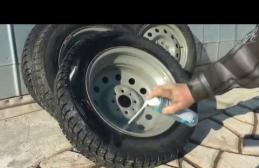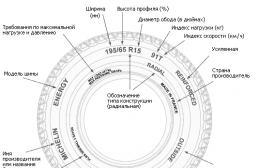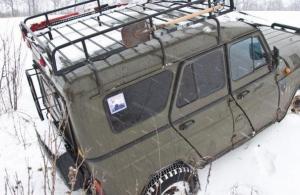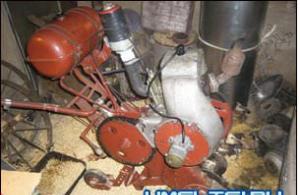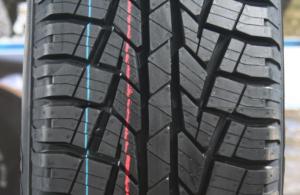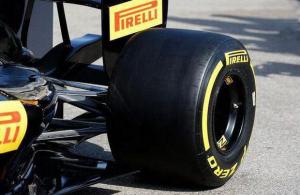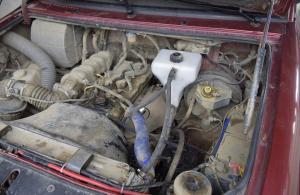Renault Master- a large family of French light-duty vehicles. The model is also known in Europe and Great Britain as Opel Movano and Vauxhall Movano, but it was developed and produced by French specialists.
Renault Master is a car capable of performing a variety of tasks. The car was produced in several body types (vans, passenger versions, chassis). The most popular was cargo variation. Distinctive feature Renault Master is a huge storage capacity.
The production of the model began in 1980, and after the introduction of restrictions on the tonnage of cars, the demand for it increased markedly. Renault Master completes the brand's commercial vehicle product line. The third generation of the model is currently on sale in Russia.
Mods overview
Model history and purpose
First generation
The first Renault Master model was in development for several years. Her debut took place in 1980. Initially, the car got a 2.4 liter Fiat-Sofim diesel unit. Later, a 2.1-liter diesel engine appeared. Since 1984, 2- and 2.2-liter gasoline engines have been added to the line of power units. A distinctive feature of the first Renault Master were unusual round door handles (similar to Fiat Ritmo) and a side sliding door. Soon the French brand sold the rights to the family Opel... Initially, the production of cars was carried out at the Renault plant, and then it was transferred to the SoVAB plant located in Batiya.
Externally, the car did not look very presentable. An angular body, large rectangular headlights, a classic radiator grill did not add to the attractiveness of the model.
Initially, demand for Renault Master was low, but panel vans quickly gained popularity. An additional advantage of the car was the large cargo compartment, which consumers liked. However, the debut generation of Renault Master was losing to competitors (especially to distributors from Fiat). However, it lasted 17 years.
Second generation
 In 1997, the French presented the second generation Renault Master. A year later, the car was recognized as the "Best Truck of the Year". From the second generation, the model acquired features that have survived to this day. The car was distinguished by slightly chopped edges and a sliding structure. At the same time, the French frankly copied some elements from the Fiat Ritmo and Fiat Strada models (door designs, handles). However, Renault called all claims of a competitor unfounded.
In 1997, the French presented the second generation Renault Master. A year later, the car was recognized as the "Best Truck of the Year". From the second generation, the model acquired features that have survived to this day. The car was distinguished by slightly chopped edges and a sliding structure. At the same time, the French frankly copied some elements from the Fiat Ritmo and Fiat Strada models (door designs, handles). However, Renault called all claims of a competitor unfounded.
Renault Master II has become much more attractive and received " European appearance". At the front, a large bumper with niches for foglights, rounded bonnet lines, large headlights and a brand logo that divided the grille in half were striking.
All Renault Master II modifications were assembled in the north-east of France and distinguished themselves by the highest quality. The engine range has expanded significantly and included diesel engines of the G-Type series (development of Renault), Sofim 8140 and YD ( Nissan development). A 5- and 6-speed manual transmission and a 6-speed automatic transmission were used as transmissions.
In 2003, Renault Master II underwent a global restyling, within which the outlines of the body became softer and the area of the headlights was increased. The model has become more like Renault Trafic.
Third generation
 Third generation Renault Master was introduced in the spring of 2010. The car was immediately produced under several brands (Nissan NV400, Vauxhall Movano, Opel Movano). The exterior of the model has been revised. Here there were huge teardrop-shaped headlights, a luxurious massive bumper and clear lines of the front end. Lighting technology and protection of body panels at the front and rear emphasized the reliability, solidity and modernity of the car. In terms of design, Renault Master III turned out to be very interesting. It was possible to give the car even more individuality by choosing the version of the sides (glazed or conventional).
Third generation Renault Master was introduced in the spring of 2010. The car was immediately produced under several brands (Nissan NV400, Vauxhall Movano, Opel Movano). The exterior of the model has been revised. Here there were huge teardrop-shaped headlights, a luxurious massive bumper and clear lines of the front end. Lighting technology and protection of body panels at the front and rear emphasized the reliability, solidity and modernity of the car. In terms of design, Renault Master III turned out to be very interesting. It was possible to give the car even more individuality by choosing the version of the sides (glazed or conventional).
The dimensions of the model have slightly increased, which has made it possible to expand the useful volume to 14.1 cubic meters. The thresholds have been specially optimized for unloading and loading.
The line of power units has undergone changes. This includes motors with a capacity of 100-150 hp.
In 2016, the French presented special version Renault Master X-Track with increased ground clearance, underbody protection and limited slip differential. Later, an all-wheel drive variation of the Renault Master 4 × 4 model appeared.

Today the car is used in various fields, but Renault Master vans have gained the most popularity, which are used to transport goods of various volumes.
Specifications
To expand the functionality of the body, Renault specialists proposed several modifications of the model with 3 variations in height and length. There were also several ways to arrange the internal partitions.

The short wheelbase version received a length of 5048 mm, a width of 2070 mm. Its height was 2290-2307 mm. The ground clearance remained unchanged for all modifications - 185 mm. The front track was 1750 mm, the rear track was 1612-1730 mm. In the middle version, the model had a length of 6198 mm, in the long wheelbase - 6848 mm. Wheelbase ranged from 3182 mm to 4332 mm. Turning circle - 12500-15700 mm.
The maximum load, depending on the variation, was from 909 to 1609 kg. Permissible full mass was 2800-4500 kg. Trunk volume - 7800-15800 l.

Average fuel consumption:
- urban cycle - 9.5-10 l / 100 km;
- mixed cycle - 8-9.3 l / 100 km;
- extra-urban cycle - 7.1-8.9 l / 100 km.
The capacity of the fuel tank is 100 liters.
Engine
All modifications of the latest Renault Master are equipped with a 2.3-liter diesel unit with a capacity of 100 to 150 hp. This motor is a continuation of Nissan's MR engine lineup, but is used exclusively on the Renault Master and twin models. All versions of the unit comply with Euro-4 requirements. Versions with system available Common rail and without it. The engines have 4 cylinders (in-line arrangement).
Motor characteristics:
- 100 hp version - maximum torque 248 Nm;
- 125 hp variation - 310 Nm maximum torque;
- 150 hp version - maximum torque 350 Nm.
Device
The range of commercial vehicles especially clearly reflects the corporate identity of the French brand. Renault Master is a vivid confirmation of this. The body of the car is both practical and high-quality, highlighted by a large decorative grille, which adds personality to the model. Side protection and volumetric front bumper make travel safer. French assembly guarantees the highest quality of all components. The model is distinguished by low operating costs. External elements (doors, hood and others) have a long service life. It is no coincidence that the manufacturer provides a guarantee against through corrosion for 6 years. One of the components of durability is decorative coating body.

The front suspension for the model was constructed using a 2-arm overhead jet thrust. A similar scheme is different wide profile, allowing you to control the movement of the machine on wet road... The front wheels are provided with independent suspension. The last generation Renault Master is equipped with suspension and undercarriage which are known for their excellent directional stability. The wide track provides additional control on any type of surface. Regardless of the load stable work the suspension is preserved. The basis rear suspension lay down the trailing arm.
The Renault Master brake system stands out for its increased efficiency. Ventilated disc brakes are used at the front, disc brakes at the rear.
On Russian market versions of the car with front and rear wheel drive... A 6-speed transmission is offered as a transmission mechanical box gear. Sixth speed improves consumption characteristics car and increases the acoustic comfort inside. The shift lever travel in the Renault Master III is shorter and the shift force is reduced. In this case, all gears are switched extremely clearly. By revising the ratio gear ratios in the KP, the acceleration dynamics of the car has increased.

Inside, the latest Renault Master is an incredibly thoughtful product. In the cockpit there are many storage facilities for items of different purpose and size. There are pockets for change and capacious niches for documents. This allows the driver or freight forwarder to pack everything needed. Visibility to the sides and through windshield perfect. In addition, the driver can adjust the steering wheel height to the optimum position. The hydraulic booster allows you not to exert additional efforts while driving. The seats deserve special attention. The driver's seat effectively minimizes vibrations and vibrations regardless of the person's weight. "Speed bumps" are practically not felt on it. Height adjustment and lumbar support are also available (already in the basic version).
The Renault Master III is smart and looks more like an expensive long-range truck than a delivery van designed for the city and its environs.
Test Drive Video
"Master" from "Renault" is quite large the lineup cargo vans and trucks. This car very widely known in European countries ah, including the UK. Also, these cars are known under the Opel Movano brands. However, the model was developed entirely by French engineers. Let's see what kind of cars they are and analyze what reviews the owners leave about the Renault Master.
Briefly about the car
The good thing about this model is that it can be used for a wide variety of tasks. For all the time the company produced the "Master" in several bodies - there are versions designed for cargo transportation, passenger transportation, and were also just a chassis. The Renault Master cargo van was especially popular. The difference between these models is that the luggage compartment allows you to accommodate a lot of payload.
The first generation of the "Master"
This version has been developed by Renault for several years. The debut took place in 1980. Initially, this modification was equipped with a Fiat-Sofim diesel engine. Its volume was 2.4 liters. Further, another engine was added to the range of engines - this is a 2.1-liter unit. Since 1984, the manufacturer began to equip the model and gasoline engines... These are motors with a volume of 2 and 2.2 liters.
Among the features that were in the first generations are the unique handles on the doors. They were distinguished by their rounded shape - the same handles could be seen on the Fiat Ritmo. The side door had a sliding design. Then the right to manufacture this model was transferred to the Opel company. The release was organized at Renault production sites, but then it was transferred to SoVab sites.
Renault Master's design was notable for its weak appeal, even for a commercial vehicle. The shapes and lines of the body were angular, the headlights were rectangular, and the grille had a traditional classic appearance... The car was not at all aesthetic.
The demand for the car was not high, but later panel vans began to gain the attention of the consumer. Additional advantage of these modifications - a sufficiently solid compartment to accommodate cargo. The cars were intended for commercial use, and the consumer enjoyed a lot of luggage space. Even so, the debut version lost out to similar cars from Fiat.
Second generation
It was 1997, and Renault Master was presented in France in the second version. A year later he was recognized “ the best truck of the year". The car received an original appearance and the main features by which it is recognized today.

The second version became much more attractive, and the appearance was very similar to the European one. At the front, a large bumper stood out with places for fog lights... The bonnet has more rounded lines, the headlights are bigger, and the emblem divides the grille in half.
The assembly was established in the northeastern part of France. I must say that the build quality was on high level... This is confirmed more than once by reviews. The range of engines has expanded - thus, diesel units G-Type, YD, Sofin 8140. As for the transmission system, a 5-speed manual transmission was installed. There was also a six-speed manual transmission.
In 2003, the model underwent a global restyling. As a result, the body design has improved significantly. Its outlines have become softer, the headlights have increased in size. The model has become very similar to Renault Traffic.
Third version
This model was shown to the world in 2010. It was produced under several names at once. The design has been seriously revised. It featured large head optics and a luxurious bumper. The front part is distinguished by the presence of clear lines. The appearance of the car has become more reliable and solid.
dimensions increased - this led to an increase in useful volume to 14.1 m 3. The thresholds have been specially optimized to make loading and unloading easier and more convenient. As for engines, this includes units with a capacity of about 100-150 Horse power.

In 2016, a special version of the new Renault Master was presented, equipped with increased ground clearance, bottom protection and differential protection. Later, French developers showed an all-wheel drive version.
Now the car is very popular in a wide variety of commercial activities. The Renault Master cargo van is especially popular.
Overall dimensions, clearance
In order to maximize functionality bodies, engineers presented several versions of bodies, differing in length and height. There were also several options for the location of the partitions inside the body.
The short base version was 5048 mm long and 2070 mm wide. The height of this modification ranged from 2290 to 2307 millimeters. The ground clearance was unchanged for any of the versions and was 185 millimeters. In the reviews about Renault Master, the owners indicate that such a clearance is quite enough for most tasks.

The medium wheelbase car was 6198mm long, while the long wheelbase models were 6848mm long. In this case, the length of the wheelbase ranged from 3182 to 4332 millimeters. The turning radius ranges from 12.5 to 15.7 m.
The maximum carrying capacity, depending on the body of the Renault Master, could be from 909 to 1609 kilograms. At the same time, the total curb weight was equal to from 2800 to 4500 kg. Luggage compartment had a volume of 7800 to 15 800 liters.
Interior
V commercial vehicle the interior is not the most important thing, but everything is carefully thought out here. The driver will be very comfortable in the cockpit. There are many different compartments for small items, storage for food, as well as documentation.
The car has excellent visibility through all the glass. Wheel can be adjusted in height - you can choose the most optimal position. All Renault Master configurations are equipped with a power steering - you don't have to make any effort to control it.

It is imperative to say about the seats - the driver's seat is made in such a way as to minimize vibrations and various vibrations, regardless of the driver's weight. Driving this speed bump car, you may not even feel it. Even in a simple configuration, the chair is height adjustable.
Power section
Any version is equipped with a 2.3-liter diesel engine. There are three engines to choose from, ranging from 100 to 150 horsepower. These motors are a logical continuation of Nissan's MR design. But these motors are installed only on cargo models... Any version of the Renault Master engine has an acceptable consumption and meets environmental requirements(in this case Euro-4). There are models with "Common Rail", as well as without it. All motors are in-line, four-cylinder. The 100 horsepower version has a torque of 248 Nm. The 125 horsepower version has a torque of 310 Nm. The 150-horsepower version has a torque of 350 Nm.
Body
He on these cars is both practical and well-made. There is a large decorative grille that adds a bit of originality to the car. Side protection and a large front bumper enhance safety.

French assembly is a guarantee that every unit and element in this car is different high quality... Operating costs are surprisingly low. Resource body parts big enough.
Suspension
The design of the front suspension is based on a jet thrust linking the two control arms. This scheme allows precise control of the vehicle on wet surfaces. The very same type of front suspension is independent.

The latest generation cars are equipped with a suspension and chassis, which are distinguished by high performance in terms of directional stability... Additionally, you can control handling on any surface due to the wide track. The suspension works in such a way that its stability does not depend on the vehicle load. The rear suspension is a trailing arm.
Brake system
The French use classic brakes. Front - ventilated discs, rear - also discs, but without ventilation. In reviews of Renault Master, the owners write about the good performance of these brakes in the car.
Transmission
In the domestic market, modifications are available with both front-wheel drive and rear-wheel drive. As a gearbox, the manufacturer offers a manual 6-speed manual transmission. A feature of the third-generation gearbox is a small lever stroke, low noise. This is confirmed by the reviews about Renault Master - it is on these machines that the entire transport network of courier deliveries in Europe is built.
Conclusion
So, we found out what it has specifications Renault Master, and the reviews were also considered. As you can see, the car is very reliable and easy to maintain. It is definitely worth considering if you are in need of a purchase. commercial vehicles.
Designed by French engineers Renault Master model liked the motorists of many European countries. The technical characteristics of the Renault Master cargo van allow the car to be in great demand.
History of the creation of the model
The Renault Master modification, created back in 1980, was developed for several years and immediately gained popularity. During this time, three generations of similar machines were produced on the world market. The second and third generations were introduced in Europe and the UK under the names Opel Movano, Nissan NV400 and Vauxhall Movano. When restrictions on the tonnage of vehicles were introduced, the demand for these vehicles increased sharply.


Car modifications
Renault Master is produced in various versions:
- standard van with increased height or long base;
- passenger modification, including route taxi and a bus;
- chassis.



The most demanded was a cargo van designed to transport goods around the city and its environs.
The first generation of the car was produced for 17 years. During this time, except diesel engine, which had a volume of 2.4 liters, a 2.1 liter engine appeared, and later gasoline units with a volume of 2 and 2.2 liters. At that time, the appearance of Renault Master was the most ordinary. Angular shapes, headlights and radiator grille was not very attractive.

Until 2010, the company produced the following family of vans. They were equipped with power units, having a volume: 2.2, 2.5 or 2.8 liters. As a result of the restyling carried out in 2003, the appearance of the Renault Master II has changed significantly. Mainly due to the rounded body lines, large headlights and bumper.

Renault Master III design has been significantly revised. The front part with clear lines, massive bumper, drop-shaped headlights gave the car individual features. Volume cargo compartment has been increased. Loading and unloading has been greatly facilitated by the optimization of the thresholds. The range of engines was expanded to include motors with power from 100 to 150 horsepower.

In 2016, a modification of the Renault Master X-Track was introduced, in which the ground clearance, made underbody protection and limited slip differential. Another novelty is the all-wheel drive Renault Master 4 × 4.


Vehicle device

The Renault Master van is equipped with a mechanical six-speed gearbox gears, front or rear wheel drive. The speeds are switched clearly and silently. The machine has excellent dynamics overclocking. Installed front independent, manufactured by McPherson, and rear dependent suspension... High quality, according to drivers' reviews, brake system comprises disc brakes, the front ones are equipped with ventilation. Vehicle equipped hydraulic booster steering wheel.
The cab of the car is a combination of comfort and ergonomics, and the capacity of the cargo compartment is a great advantage of the brand. The manufacturer provides a 6-year warranty against perforating corrosion of the body.
The developers have created an excellent overview for the Renault Master van driver. Adjustment of the steering wheel and seat is provided, and the design of the chair perfectly dampens vibrations and vibrations that occur when driving.
The protection of the driver and passengers is provided by:
- passive system consisting of airbags and seat belts;
- Hill start assist creating additional braking force holding Renault Master when stopping or parking on inclines;
- ESP belaying during turns at high speed;
- ABS allowing you to maintain control over vehicle during emergency braking.
Description of technical parameters
Renault Master technical characteristics allow the car to be popular with consumers. It is quite competitive in the commercial vehicle market, has reliability and unpretentious maintenance.
Renault Master is characterized by:
- dimensions: 5.548 x 2.07 x 2.486 m;
- ground clearance: 18.5 cm;
- wheelbase: 3.682 m;
- loading height: 0.548 m;
- turning radius: 7.05 m;
- carrying capacity: 1.498 kg;
- cargo compartment size: 3.083 x 1.765 x 1.894 m;
- car body volume: 10.3 m 3;
- quantity seats Renault Master: 3;
- tires: 225/65 R16.

Fuel consumption data
The machine motor runs on diesel fuel... The car is quite economical. In the urban cycle, fuel consumption is 9.6 liters per 100 km, in the suburban cycle - 7.3 liters. To ride in mixed cycle 8.1 liters are required for every 100 km. Renault Master comes with fuel tank with a capacity of 100 liters, which allows you to travel long distances without refueling.

Power unit of the van
Renault Master is equipped with a four-cylinder, sixteen-valve MR engine from Nissan, with an in-line arrangement of cylinders, having direct injection and pressurization.
Renault Master engine has:
- volume of 2.3 liters;
- with a capacity of 100-150 liters. with.;
- torque (limiting) 248-350 N / m;
- ecological class Euro 4.
Those who wish are offered cars in which Common system Rail.


